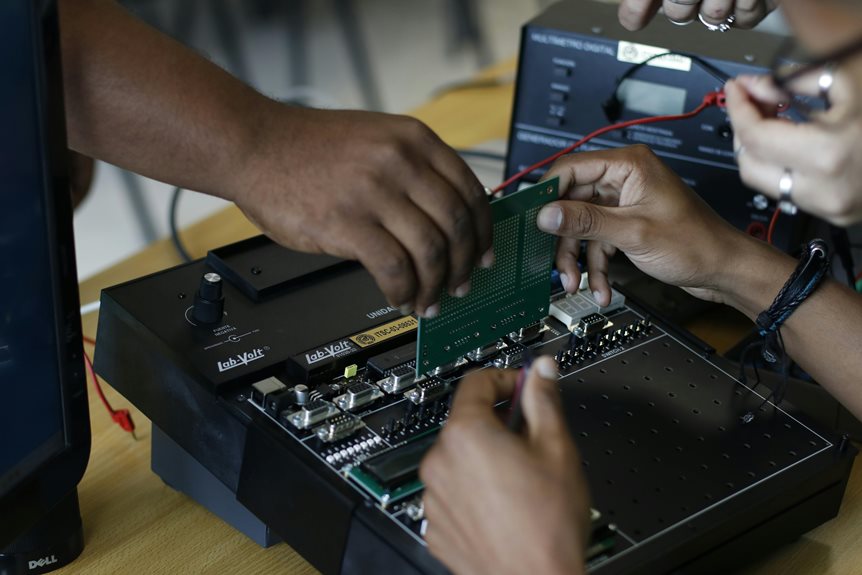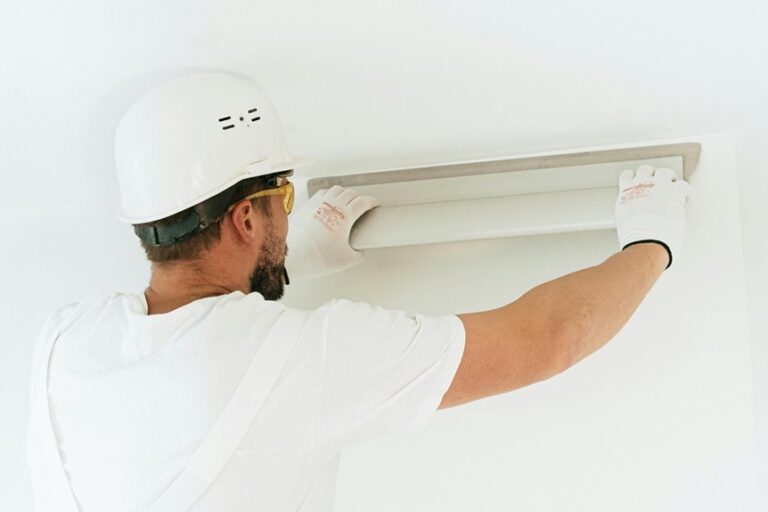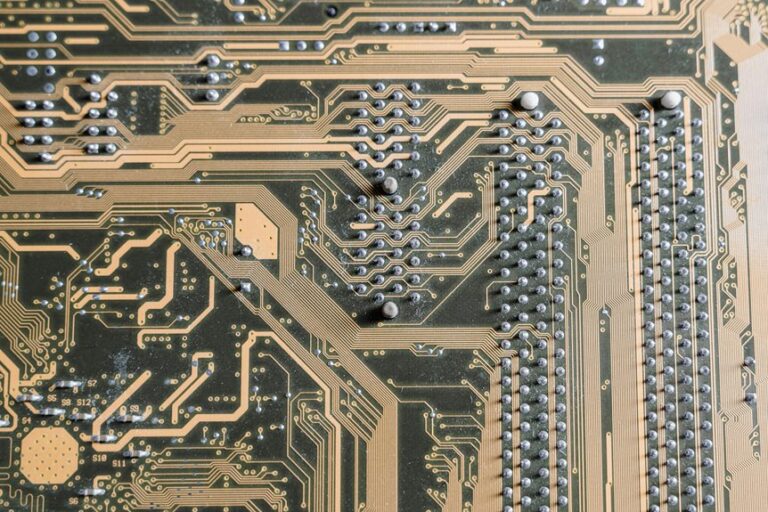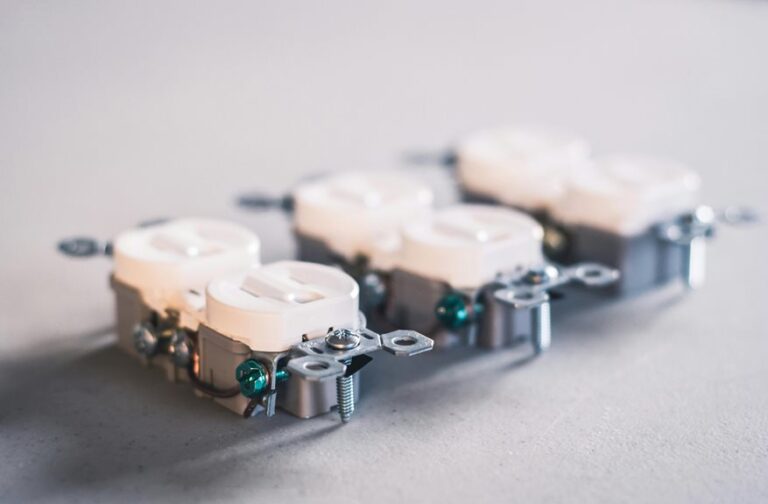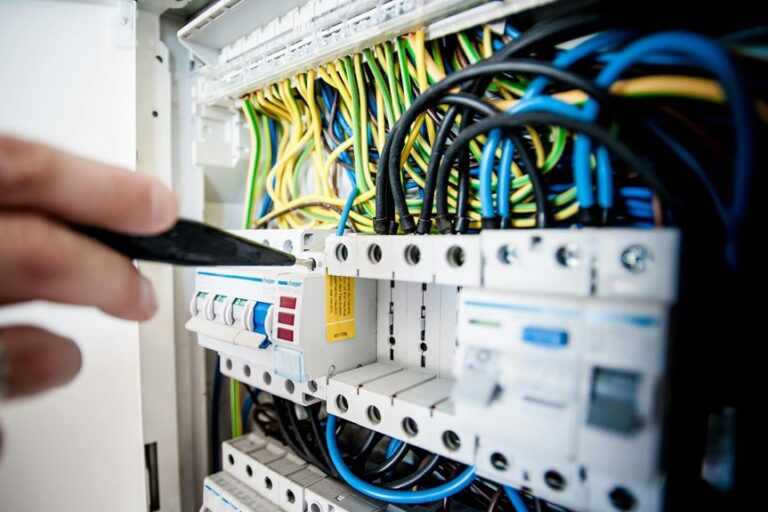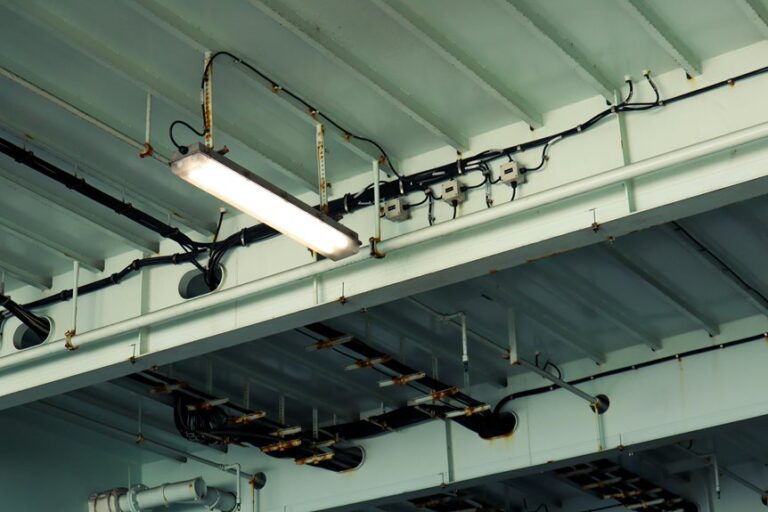Just as a well-tuned orchestra relies on each instrument for perfect harmony, your electrical systems depend on a structured maintenance program to function at peak efficiency. By prioritizing scheduled maintenance, you can mitigate risks associated with unexpected failures and enhance overall system reliability. Understanding the key components and benefits of these programs is vital for effective implementation. But how do you guarantee that your maintenance schedule not only complies with safety regulations but also drives continuous improvement in performance? The answer lies in strategic planning and rigorous evaluation.
Importance of Scheduled Maintenance
Scheduled maintenance is essential for guaranteeing the reliability and efficiency of electrical systems. By adhering to a structured maintenance schedule, you'll minimize the risk of unexpected failures and costly downtime. Regular inspections and servicing allow you to identify potential issues before they escalate into major problems, enhancing the lifespan of your equipment.
Moreover, scheduled maintenance promotes peak performance. When electrical systems operate under their designed parameters, energy efficiency improves, directly impacting operational costs. You'll find that proactive maintenance practices can lead to significant savings through reduced energy consumption and prolonged equipment life.
In addition, compliance with industry regulations often mandates scheduled maintenance. You'll need to document your maintenance activities to guarantee adherence to safety standards and local codes. Failure to comply can result in penalties, increasing your operational risks.
Finally, investing in scheduled maintenance fosters a culture of safety within your organization. Regular checks not only protect your assets but also safeguard your workforce from potential hazards associated with electrical failures. By prioritizing scheduled maintenance, you create a reliable, efficient, and safe working environment that benefits everyone involved. Additionally, engaging with reliable electricians in Upland can provide expert insights and support for your maintenance needs.
Key Components of Programs
A thorough electrical maintenance program incorporates several key components that guarantee peak performance and reliability of your systems.
First, you need a detailed inventory of all electrical assets, which helps in tracking their condition and scheduling regular assessments.
Next, implementing a systematic inspection schedule guarantees that each component undergoes routine checks to identify potential issues before they escalate.
Another vital element is the documentation of maintenance activities. Keeping accurate records allows you to analyze historical data, informing future maintenance strategies and identifying trends.
Training personnel on safety protocols and operational procedures is essential, as it mitigates risks during maintenance tasks.
Additionally, integrating predictive maintenance technologies can enhance your program by utilizing data analytics to forecast failures, thereby optimizing maintenance timing and resource allocation.
You should also prioritize compliance with relevant electrical codes and standards, guaranteeing that all maintenance activities meet regulatory requirements.
Finally, establishing a feedback loop for continuous improvement allows you to adapt your program based on performance outcomes and evolving technology.
Benefits of Electrical Maintenance
Implementing an effective electrical maintenance program greatly enhances your equipment's lifespan, ensuring reliable performance over time.
You also improve safety measures, reducing the risk of electrical hazards in your operations.
Ultimately, these benefits lead to cost-effective operations, allowing you to allocate resources more efficiently.
Enhanced Equipment Lifespan
How can regular electrical maintenance extend the lifespan of your equipment? By systematically addressing potential issues before they escalate, you can notably enhance the durability and performance of your electrical systems.
Regular inspections allow you to identify wear and tear, ensuring that components such as wiring, breakers, and motors are operating within specified parameters.
During maintenance, technicians can clean connections, tighten loose components, and replace worn parts, which minimizes resistance and thermal buildup.
This proactive approach not only prevents costly breakdowns but also maximizes efficiency, which in turn reduces energy consumption and operational costs.
Additionally, maintaining ideal operating conditions reduces stress on equipment, resulting in less frequent replacements and repairs.
Improved Safety Measures
Regular electrical maintenance greatly enhances safety measures within your facility. By routinely inspecting and testing electrical systems, you can identify potential hazards before they escalate into serious issues. This proactive approach reduces the risk of electrical fires, equipment malfunctions, and electrical shock incidents.
Through regular maintenance, you'll guarantee that circuit breakers, fuses, and safety switches are functioning correctly. This minimizes the likelihood of overloads and short circuits. Additionally, maintaining proper grounding and bonding of electrical systems prevents dangerous voltage imbalances, protecting personnel and equipment alike.
You'll also benefit from enhanced compliance with safety regulations. Adhering to local codes and standards not only safeguards your facility but also mitigates legal liabilities. Regular audits and maintenance documentation provide essential proof of compliance, making it easier to demonstrate due diligence in safety practices.
Finally, a well-maintained electrical system contributes to a culture of safety. When employees observe a commitment to safety through maintenance practices, they're more likely to adhere to safety protocols themselves, fostering a safer work environment overall.
Prioritizing electrical maintenance isn't just about equipment; it's about protecting people and guaranteeing operational integrity.
Cost-Effective Operations
A commitment to electrical maintenance not only enhances safety but also leads to significant cost-effective operations.
By implementing a structured maintenance program, you can reduce operational costs and extend the lifespan of your electrical systems.
Here are three key benefits that illustrate how effective maintenance can optimize your bottom line:
- Minimized Downtime: Regular inspections and timely repairs prevent unexpected failures, allowing your operations to run smoothly. This minimizes production halts and associated costs.
- Increased Energy Efficiency: Well-maintained electrical systems operate more efficiently, reducing energy consumption. This translates to lower utility bills and a smaller carbon footprint, which is increasingly important in today's eco-conscious market.
- Lower Repair Costs: Addressing minor issues before they escalate into major problems can save you significant repair costs. Frequent maintenance helps identify wear and tear early, allowing for cost-effective solutions rather than expensive emergency repairs.
Common Maintenance Tasks
When it comes to electrical maintenance programs, understanding common maintenance tasks is essential for guaranteeing safety and operational efficiency. Regularly performing these tasks helps identify potential issues before they escalate into major problems, ultimately saving time and resources. Here are some crucial maintenance tasks you should prioritize:
| Task | Frequency | Purpose |
|---|---|---|
| Visual Inspection | Monthly | Check for signs of wear or damage |
| Circuit Testing | Quarterly | Guarantee proper functionality of circuits |
| Cleaning Disconnects | Semi-Annually | Prevent dust build-up and overheating |
| Lubrication of Motors | Annually | Reduce friction and extend lifespan |
| Thermal Imaging | Annually | Identify hotspots and electrical faults |
Developing a Maintenance Schedule
To develop an effective maintenance schedule, you need to assess the specific needs of your equipment and determine the appropriate frequency of inspections.
This guarantees that all critical components receive timely attention, minimizing downtime and enhancing reliability.
Additionally, documenting maintenance activities is essential for tracking performance and compliance with safety standards.
Assessing Equipment Needs
Identifying the specific needs of your equipment is essential for developing an effective maintenance schedule. You need to assess various factors that influence the performance and longevity of your electrical systems. This assessment helps you prioritize maintenance tasks and allocate resources efficiently.
To evaluate your equipment needs, consider the following key areas:
- Operational Demands: Analyze how often your equipment is used and the conditions under which it operates. High-stress environments may necessitate more frequent checks.
- Historical Performance Data: Review past maintenance records to identify patterns in equipment failures or issues. This data provides insights into components that frequently require attention.
- Manufacturer Guidelines: Consult the manufacturer's recommendations for maintenance intervals and inspections. These guidelines are designed to optimize equipment performance and reliability.
Frequency of Inspections
Establishing a systematic frequency of inspections is crucial for maintaining the integrity and efficiency of your electrical systems. Regular inspections allow you to identify potential issues before they escalate into costly failures.
Start by evaluating the criticality of your equipment; more significant systems should undergo inspections more frequently. Generally, you should consider conducting a thorough inspection every six months for equipment with heavy usage, while less critical systems may require annual checks.
However, environmental factors, such as humidity and temperature fluctuations, can necessitate adjustments in your schedule. Additionally, you should factor in manufacturer recommendations, as these often provide specific guidelines tailored to each piece of equipment.
Incorporating predictive maintenance techniques can further refine your inspection schedule. By analyzing operational data and performance trends, you can proactively address potential failures, optimizing your maintenance efforts.
Always be prepared to adjust your inspection frequency based on observed performance and any changes in operational demands. This dynamic approach guarantees that your electrical systems remain reliable and efficient, minimizing downtime and extending the lifespan of your equipment.
Prioritizing inspection frequency is a significant step in developing an effective maintenance schedule.
Documenting Maintenance Activities
Maintaining an extensive record of maintenance activities is essential for guaranteeing the long-term reliability of your electrical systems. Proper documentation allows you to track issues, streamline maintenance processes, and comply with regulatory requirements.
To develop a robust maintenance schedule, consider the following key steps:
- Log Maintenance Tasks: Document all performed maintenance activities, including inspections, repairs, and replacements. This provides a historical context that can reveal patterns over time.
- Establish Frequency: Determine the frequency of each task based on manufacturer recommendations, system usage, and past performance data. This guarantees that critical components receive attention in a timely manner.
- Utilize Software Tools: Implement a computerized maintenance management system (CMMS) or similar software to automate scheduling, track compliance, and generate reports. This enhances efficiency and accuracy in your documentation efforts.
Tools and Technologies Used
In the domain of electrical maintenance, the right tools and technologies are vital for guaranteeing efficiency and safety. You need to equip yourself with various devices that facilitate precise diagnostics and repairs. This minimizes downtime and enhances operational reliability.
Here's a breakdown of some significant tools and technologies you should consider:
| Tool/Technology | Purpose |
|---|---|
| Multimeter | Measures voltage, current, and resistance, essential for diagnosing electrical issues. |
| Infrared Camera | Detects hot spots in electrical systems, helping to identify potential failures before they occur. |
| Circuit Analyzer | Assesses circuit performance and identifies inefficiencies or faults within the electrical system. |
Utilizing these tools not only streamlines maintenance tasks but also markedly improves safety protocols. By integrating advanced technologies, such as predictive maintenance software, you can analyze data trends and anticipate potential issues. This proactive approach guarantees that your electrical systems remain in peak condition, reducing the risk of unexpected failures. Ultimately, investing in the right tools and technologies leads to more effective maintenance strategies and enhanced operational longevity.
Training and Certification Requirements
Many professionals in the electrical maintenance field recognize that proper training and certification are essential for ensuring safety and compliance with industry standards.
To effectively maintain electrical systems, you need to stay updated on the latest techniques and regulations. Here are three key training and certification requirements you should consider:
- National Electrical Code (NEC) Training: Familiarizing yourself with the NEC is vital. This training covers the standards for safe electrical installation and maintenance, ensuring you understand the legal requirements.
- Safety Training Programs: Enrolling in safety courses helps you recognize hazards and apply safety protocols. This training often includes hands-on experience with personal protective equipment (PPE) and emergency response procedures.
- Certification Programs: Obtaining certifications from recognized organizations, such as the International Society of Automation (ISA) or the National Institute for Certification in Engineering Technologies (NICET), can enhance your credibility.
These programs validate your skills and knowledge in electrical maintenance.
Compliance and Safety Regulations
Adhering to compliance and safety regulations is vital for effective electrical maintenance. You must familiarize yourself with local, state, and national codes, such as the National Electrical Code (NEC) and Occupational Safety and Health Administration (OSHA) standards. These regulations establish the minimum safety requirements, helping prevent accidents and guaranteeing reliable system operation.
When implementing your maintenance program, you'll need to incorporate regular inspections, testing, and necessary updates to electrical systems. This proactive approach not only mitigates risks but also aligns with compliance mandates.
Documenting your maintenance activities is essential; it provides a clear record that demonstrates adherence to regulations and can be invaluable during audits.
Moreover, don't overlook the importance of employee training in safety protocols. Confirm your team understands the regulations and the consequences of non-compliance. Regular safety drills and refreshers can reinforce this knowledge.
Finally, staying updated on regulatory changes is critical. New technologies and methods can lead to amendments in safety protocols, and you must adapt your maintenance programs accordingly.
Evaluating Program Effectiveness
To guarantee your electrical maintenance program is effective, you need a systematic approach to examine its performance regularly.
This evaluation not only identifies areas for improvement but also helps in ensuring compliance with safety regulations.
Here are three key components to take into account when evaluating your program's effectiveness:
1. Performance Metrics: Establish clear metrics such as downtime, mean time between failures (MTBF), and maintenance costs.
Regularly track these metrics to identify trends and areas needing attention.
2. Feedback Mechanism: Implement a structured feedback system from your maintenance team.
Gather insights on challenges faced during maintenance tasks, as well as suggestions for process improvements.
3. Audit and Review: Schedule periodic audits of your maintenance processes.
These reviews should evaluate compliance with standards, the efficiency of procedures, and the overall health of your electrical systems.
Conclusion
In the world of electrical systems, a proactive approach to maintenance isn't just a good idea; it's a necessity. By embracing scheduled maintenance, you're not merely avoiding potential pitfalls; you're nurturing the longevity and efficiency of your equipment. Think of it as a preventive shield, safeguarding against unexpected disruptions. By investing in a well-structured program, you're setting the stage for a future where reliability reigns supreme, ultimately leading to smoother operations and enhanced safety for everyone involved.

